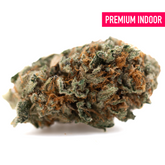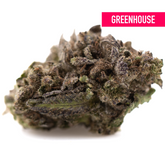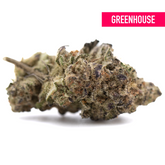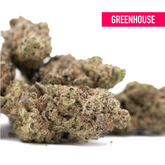THCA Flower Effects: What to Expect and How Long They Last
If you're curious about THCA flower effects, you're not alone. As more people discover this unique cannabis compound, questions about what to expect from your first THCA experience are becoming increasingly common. Unlike traditional THC flower, THCA offers a complex profile that can vary dramatically depending on how you consume it.
The confusion often stems from THCA's dual nature: it's non-psychoactive in its raw form but transforms into THC when heated. This means your THCA flower experience could range from subtle therapeutic effects to a full psychoactive journey, depending entirely on your consumption method.
Understanding what does THCA feel like requires distinguishing between psychoactive and non-psychoactive effects. When consumed raw, THCA won't produce the "high" associated with THC. However, once heated through smoking, vaping, or cooking, THCA converts to THC, delivering effects remarkably similar to traditional cannabis.
Individual responses to THCA vary significantly based on factors like body weight, metabolism, tolerance levels, and consumption method. Some users report feeling effects within minutes of smoking, while others might wait hours when consuming raw THCA products. This variability makes it crucial to start slowly and pay attention to your body's unique responses.
Raw THCA Effects: The Non-Intoxicating Experience
Raw THCA consumption offers a fundamentally different experience from heated cannabis products. When you consume THCA flower without heating it, you're accessing the compound in its acidic, non-intoxicating form. This means no euphoria, altered perception, or cognitive impairment – but that doesn't mean no effects at all.
Many users report subtle but noticeable therapeutic sensations when consuming raw THCA. These non-psychoactive effects often manifest as a gentle sense of physical comfort and mental clarity rather than the pronounced alterations associated with THC.
Anti-inflammatory sensations represent one of the most commonly reported raw THCA effects. Users frequently describe a reduction in physical tension and discomfort, particularly in joints and muscles. This isn't the numbing sensation of pain relief but rather a subtle easing of inflammation-related discomfort. The effects typically develop gradually, creating a sense of physical ease that many find conducive to daily activities.
Digestive comfort is another frequently mentioned benefit of raw THCA consumption. Users often report improved appetite regulation, reduced nausea, and better overall digestive function. Unlike THC's sometimes overwhelming appetite stimulation, raw THCA tends to normalize hunger cues and support healthy digestion without creating intense cravings.
The mood and energy impacts of raw THCA are typically subtle but meaningful. Many users describe improved focus, reduced anxiety, and a general sense of well-being. This isn't the euphoric mood elevation of THC but rather a gentle lifting of stress and tension that allows natural energy levels to emerge. Some report better sleep quality and more stable mood throughout the day.
Timeline for raw consumption effects varies considerably among individuals. Most users begin noticing subtle changes within 30 minutes to 2 hours of consumption. The effects typically peak around 2-4 hours and can last anywhere from 4-8 hours total. Unlike smoked or vaped products, raw THCA effects tend to develop gradually and fade slowly, creating a gentle arc rather than sharp peaks and valleys.
The intensity of raw THCA effects remains consistently mild to moderate, making it appealing for users seeking therapeutic benefits without intoxication. This makes raw THCA particularly suitable for daytime use, work environments, or situations where clear thinking and normal function are essential.
Heated THCA Effects: The Psychoactive Transformation
When you heat THCA flower through smoking, vaping, or cooking, you trigger a chemical process called decarboxylation. This transformation converts THCA into THC, fundamentally changing your experience from non-psychoactive to fully psychoactive.
Decarboxylation occurs when THCA molecules lose their acidic carboxyl group under heat, typically around 220-245°F (104-118°C). This process happens almost instantly when smoking or vaping, but requires more time and controlled temperature when preparing edibles. Understanding this conversion is crucial for predicting your THCA effects duration and intensity.
Once converted to THC, THCA vs THC effects become virtually indistinguishable. Users report the full spectrum of cannabis effects: euphoria, altered perception, increased appetite, potential anxiety or paranoia at higher doses, and the characteristic "high" that defines psychoactive cannabis experiences.
The psychoactive experience from heated THCA closely mirrors traditional THC flower but with some notable characteristics. Many users report that converted THCA produces a slightly cleaner, more clear-headed high compared to some THC strains. This could be attributed to the specific terpene profiles found in high-THCA cultivars or individual biochemical responses to the conversion process.
Comparison to traditional THC flower reveals remarkable similarities in effect profiles. Users experience similar onset times, peak intensity, and duration patterns. The euphoric effects, creative enhancement, social lubrication, and potential sedation all align closely with traditional cannabis experiences. However, some users note that THCA-derived THC feels slightly more energetic and less heavy than some traditional indica strains.
Intensity and duration differences between THCA-derived THC and traditional THC appear minimal in most users' experiences. The primary variables affecting intensity remain dosage, individual tolerance, and consumption method rather than the original form of the compound. However, some users report that high-quality THCA flower provides a more consistent and predictable experience than variable-quality traditional cannabis.
The conversion process means that all safety considerations, benefits, and potential risks associated with THC consumption apply fully to heated THCA products. This includes impairment considerations, drug testing implications, and the full range of potential therapeutic and recreational effects.
Onset Times by Consumption Method
Understanding THCA onset time requires recognizing how different consumption methods affect absorption and conversion rates. Each method creates distinct timelines for when you'll first notice effects and when they'll reach peak intensity.
Raw consumption methods include adding raw THCA flower to smoothies, juices, or salads, or consuming THCA tinctures without heating. Effects typically begin within 30 minutes to 2 hours, with considerable individual variation. The onset tends to be gradual and subtle, making it easy to miss initial effects if you're expecting dramatic changes. Peak effects usually occur 2-4 hours after consumption, with total duration extending 6-8 hours.
Smoking and vaping provide the fastest onset for converted THCA effects. When you smoke or vape THCA flower, decarboxylation occurs instantly, and effects typically begin within 5-15 minutes. This rapid onset makes smoking and vaping the preferred methods for users seeking quick relief or recreational effects. Peak intensity usually occurs within 30-60 minutes, with effects tapering over 2-4 hours.
Edibles made with heated THCA follow similar patterns to traditional cannabis edibles. After consuming THCA-infused foods or beverages that have been properly decarboxylated, effects typically begin within 30 minutes to 2 hours. The wide variation in onset time reflects differences in metabolism, stomach contents, and individual absorption rates. Edible effects tend to be more intense and longer-lasting than smoked products, often persisting 4-8 hours.
Tinctures and sublingual products offer a middle ground between rapid and slow onset methods. When placed under the tongue, THCA tinctures can begin working within 15-45 minutes as compounds absorb directly into the bloodstream. However, any portion swallowed will follow typical edible timelines. This dual absorption pathway can create complex effect profiles with both quick and sustained components.
Factors affecting onset include body weight, metabolism speed, recent food consumption, individual biochemistry, product quality, and dosage amount. Larger individuals often experience slower onset times, while those with faster metabolisms may feel effects more quickly. Consuming THCA on an empty stomach typically results in faster onset but potentially more intense effects.
Tolerance levels significantly impact onset perception. Regular cannabis users might not notice subtle initial effects that would be apparent to occasional consumers. This can lead to overconsumption, particularly with edibles where delayed onset encourages additional dosing before initial effects manifest.
Duration of Effects: How Long Do THCA Effects Last
The question "how long do THCA effects last" depends entirely on consumption method and individual factors. Understanding these duration patterns helps users plan their experiences and avoid unwanted prolonged effects.
Raw THCA duration typically extends 4-8 hours from initial onset. The effects tend to plateau for several hours rather than creating sharp peaks and valleys. Many users appreciate this sustained, gentle effect profile for managing chronic conditions or maintaining consistent therapeutic benefits throughout the day. The gradual fade means most users can predict when effects will diminish without abrupt changes in their condition.
Smoked or vaped converted THCA follows shorter duration patterns, typically lasting 2-4 hours total. Effects peak within the first hour and gradually diminish over the following 2-3 hours. This shorter duration makes smoking and vaping ideal for users seeking controlled, time-limited experiences or those who want to maintain normal function relatively quickly after consumption.
Edibles made with converted THCA create the longest-lasting effects, often persisting 4-8 hours or even longer in some individuals. The extended duration results from slow absorption through the digestive system and gradual processing by the liver. While this extended timeline provides excellent value for therapeutic users, it can become problematic for those who underestimate the duration and consume additional doses.
Individual factors affecting duration include liver metabolism efficiency, body fat percentage, hydration levels, overall health status, and concurrent medications. Individuals with slower metabolisms often experience longer-lasting effects, while those with efficient processing systems may find effects fade more quickly than average.
How to extend or shorten effects varies by consumption method. For raw THCA, consuming with fatty foods may extend absorption and duration. For smoked products, consuming small additional amounts can extend the experience, though this increases total dosage. To shorten effects, staying hydrated, engaging in light physical activity, and consuming CBD may help some individuals process compounds more quickly.
Understanding duration patterns helps prevent common mistakes like redosing too early with edibles or expecting raw THCA effects to fade quickly. Planning activities, work schedules, and responsibilities around expected duration times contributes to safer, more enjoyable experiences.
Factors Affecting Your THCA Experience
Multiple variables influence what to expect from THCA, making individual experiences highly personal. Understanding these factors helps users optimize their approach and set realistic expectations for their THCA journey.
Body weight and metabolism significantly impact both onset time and effect intensity. Generally, individuals with higher body weight require larger doses to achieve similar effects, while those with faster metabolisms may experience shorter duration but quicker onset. However, these patterns aren't absolute, and individual biochemistry often overrides general rules.
Tolerance levels dramatically alter THCA experiences, particularly for converted THC effects. Regular cannabis users often need higher doses to achieve desired effects, while those new to cannabis may find even small amounts produce strong responses. Interestingly, tolerance to raw THCA appears to develop more slowly than tolerance to psychoactive effects, possibly due to different receptor interactions.
Consumption method remains one of the most controllable factors affecting experience. Smoking provides rapid onset and shorter duration, edibles create longer-lasting effects, raw consumption offers sustained non-psychoactive benefits, and tinctures allow for precise dosing and flexible timing. Each method suits different goals and preferences.
Dosage amount directly correlates with effect intensity across all consumption methods. Starting with minimal doses allows users to gauge their individual sensitivity before increasing amounts. With THCA flower, dosage control varies significantly between consumption methods – smoking allows real-time adjustment, while edibles require pre-planning and patience.
Individual biochemistry encompasses genetic variations in cannabinoid receptors, enzyme production, and neurotransmitter systems. Some individuals naturally produce more endocannabinoids, potentially affecting how they respond to external cannabinoids. Others have genetic variations that impact how quickly they process these compounds.
Time of day and setting influence experience quality significantly. Many users find raw THCA works well for daytime productivity, while psychoactive effects from heated THCA might be better suited for evening relaxation. Setting affects comfort levels, anxiety potential, and overall enjoyment, with familiar, comfortable environments generally producing more positive experiences.
Concurrent substances including caffeine, alcohol, medications, and other supplements can interact with THCA effects. Some combinations enhance certain effects while diminishing others. Understanding these interactions helps users make informed decisions about timing and combinations.
Potential Side Effects and Safety Considerations
While generally well-tolerated, THCA consumption can produce THCA flower side effects that vary based on consumption method, dosage, and individual sensitivity. Understanding potential adverse effects helps users consume responsibly and recognize when adjustments are needed.
Raw THCA side effects tend to be minimal and mild. Most commonly reported issues include minor digestive upset when consuming large amounts, particularly in individuals with sensitive stomachs. Some users report slight drowsiness or changes in appetite, though these effects are typically subtle and temporary. Headaches can occasionally occur, often related to dehydration or individual sensitivity rather than the compound itself.
Converted THC side effects mirror those of traditional cannabis consumption. Dry mouth and dry eyes represent the most common complaints, easily managed with hydration and eye drops. These effects result from cannabinoid receptor activation in salivary glands and tear ducts, creating temporary reduction in natural moisture production.
Drowsiness or energy changes can occur with both raw and converted THCA, though patterns differ. Raw THCA might produce subtle energy shifts, while converted THC can cause significant sedation, particularly with indica-dominant strains or higher doses. Some users experience paradoxical energy increases, especially with sativa-dominant varieties or lower doses.
Appetite effects vary considerably among individuals and consumption methods. Raw THCA tends to normalize appetite rather than dramatically increasing it, while converted THC often produces notable hunger increases. Some users appreciate appetite stimulation for medical reasons, while others find it inconvenient for weight management goals.
Anxiety and paranoia can occur with psychoactive doses of converted THCA, particularly in sensitive individuals or with excessive consumption. These effects are more common in unfamiliar settings, stressful situations, or when combined with other stimulants. Starting with low doses and comfortable environments significantly reduces anxiety risk.
Cognitive impairment from converted THCA affects memory, concentration, and decision-making abilities. These impairments can persist several hours, making driving, operating machinery, or making important decisions potentially dangerous. Users should plan accordingly and avoid responsibilities requiring sharp mental function.
When to be concerned includes persistent adverse effects lasting beyond expected duration, severe anxiety or panic reactions, unexpected physical symptoms, or effects that interfere significantly with daily functioning. While serious adverse reactions to THCA are rare, individual sensitivity varies, and some people may not be good candidates for cannabinoid consumption.
Managing Your THCA Experience
Successfully navigating your THCA flower experience requires preparation, patience, and attention to your body's responses. Proper management techniques help ensure positive outcomes while minimizing potential challenges.
Starting with low doses represents the most important management strategy. For raw THCA, begin with small amounts equivalent to a pinch of flower in foods or a few drops of tincture. For smoking or vaping, take one small puff and wait 15-20 minutes before considering additional consumption. This approach allows you to gauge individual sensitivity without overwhelming your system.
Creating a comfortable environment significantly impacts experience quality. Choose familiar settings where you feel safe and relaxed. Remove potential stressors, ensure privacy, and have trusted friends available if desired. Comfortable seating, appropriate lighting, and preferred music or entertainment can enhance positive experiences while providing stability if effects become uncomfortable.
Having water and snacks available addresses common physical needs during THCA experiences. Hydration helps manage dry mouth and supports overall comfort. Light, healthy snacks can stabilize blood sugar and provide comfort if appetite increases. Avoiding alcohol and excessive caffeine prevents potentially problematic interactions.
What to do if effects are too strong varies by consumption method. For smoking or vaping, effects will naturally diminish within a few hours. Focus on calm breathing, stay hydrated, and engage in gentle, distracting activities. For edibles or raw consumption with longer durations, patience becomes crucial as effects must run their course. CBD products may help counteract excessive THC effects in some individuals.
Grounding techniques including deep breathing exercises, progressive muscle relaxation, and mindfulness practices can help manage uncomfortable experiences. Focusing on immediate sensory experiences – textures, sounds, tastes – can provide stability during overwhelming moments. Reminding yourself that effects are temporary helps maintain perspective during challenging experiences.
When to seek help includes situations where effects seem disproportionate to consumption, persist far beyond expected timelines, or create dangerous behaviors or thoughts. While serious medical emergencies from cannabis are rare, individuals with heart conditions, mental health concerns, or medication interactions should consult healthcare providers about THCA use.
Drug Testing Considerations
Understanding how THCA appears in drug testing requires recognizing the compound's behavior in your system and the specifics of different testing methods. These considerations are particularly important for individuals subject to workplace drug testing or legal requirements.
How THCA shows up on tests depends on the specific testing method used. Standard drug tests typically screen for THC metabolites rather than THCA itself. However, when THCA converts to THC in your system – either through consumption of heated products or natural metabolic processes – it produces the same metabolites targeted by drug tests.
Conversion to THC metabolites can occur even with raw THCA consumption, though at much lower levels than with heated products. Your body's natural acidity and enzymatic processes can slowly convert small amounts of THCA to THC, creating detectable metabolites in some individuals. This conversion rate varies significantly among users, making prediction difficult.
Detection windows vary by testing method and consumption patterns. Urine tests, the most common workplace screening, can detect THC metabolites from THCA use for days to weeks depending on frequency and amount of consumption. Blood tests have shorter detection windows but can identify recent use more accurately. Hair tests can detect metabolites for months after last use.
Workplace implications require careful consideration of company policies and legal requirements. Some employers maintain zero-tolerance policies for any cannabis-related compounds, while others focus specifically on impairment during work hours. Understanding your specific workplace requirements helps inform decisions about THCA consumption timing and methods.
The legal complexity surrounding THCA adds another layer of consideration. While THCA itself isn't federally scheduled, its conversion to THC creates legal gray areas. State laws vary significantly, and federal employment, transportation, and security clearance positions often maintain strict cannabis prohibitions regardless of local state laws.
Strategies for testing situations include understanding detection timelines for your consumption patterns, considering synthetic urine or detox products (though effectiveness varies), and honestly evaluating whether THCA use aligns with your professional responsibilities and legal obligations.
Maximizing Benefits from THCA
Optimizing your THCA flower experience involves understanding timing, lifestyle integration, and personal response patterns. Strategic approaches help users achieve desired therapeutic or recreational outcomes while minimizing unwanted effects.
Optimal timing for consumption varies by goals and consumption method. Raw THCA works well for morning consumption when seeking all-day therapeutic benefits without impairment. Psychoactive THCA consumption through smoking or edibles typically suits evening or weekend use when impairment won't interfere with responsibilities. Consider your natural energy patterns, work schedule, and social commitments when planning consumption times.
Combining with healthy lifestyle practices can enhance THCA benefits while supporting overall well-being. Regular exercise, adequate sleep, nutritious diet, and stress management create optimal conditions for cannabinoid effectiveness. Some users find that meditation, yoga, or other mindfulness practices complement THCA's effects, particularly for anxiety or pain management applications.
Tracking your responses helps identify optimal dosing, timing, and consumption methods for your individual needs. Keep notes about consumption amounts, methods, timing, effects experienced, duration, and any side effects. This information helps refine your approach over time and provides valuable data if consulting healthcare providers about cannabis use.
Adjusting approach based on goals requires honest evaluation of what you're seeking from THCA consumption. Therapeutic users might prioritize consistent daily dosing of raw THCA, while recreational users might prefer occasional psychoactive experiences through smoking or edibles. Goals can evolve over time, requiring periodic reassessment of consumption patterns.
Quality considerations significantly impact benefit potential. High-quality THCA flower from reputable sources provides more consistent effects and better safety profiles than unknown or low-quality products. Third-party testing, proper storage, and reputable vendors help ensure you're getting pure, potent, and safe THCA products.
Integration with other treatments should involve healthcare provider consultation when THCA is used for medical purposes. Some users find THCA complements conventional treatments for pain, anxiety, inflammation, or sleep disorders. However, potential interactions with medications or other treatments require professional guidance.
Conclusion
Understanding THCA flower effects requires recognizing the compound's unique dual nature and the various factors that influence individual experiences. Whether you're seeking the subtle therapeutic benefits of raw THCA or the psychoactive effects of heated products, success depends on careful attention to dosing, timing, and personal responses.
The key takeaway about THCA effects duration is that consumption method fundamentally determines your experience timeline. Raw THCA provides 4-8 hours of gentle, non-psychoactive effects, while smoked or vaped products deliver 2-4 hours of THC-like experiences. Edibles extend effects up to 8 hours but require patience for onset.
What does THCA feel like varies dramatically between raw and heated consumption. Raw THCA offers anti-inflammatory comfort, digestive support, and subtle mood enhancement without intoxication. Heated THCA produces traditional cannabis effects including euphoria, altered perception, and potential therapeutic benefits accompanied by psychoactive experiences.
Individual variation remains the most important factor in predicting your THCA experience. Body weight, metabolism, tolerance, setting, and consumption method all influence outcomes. This variability emphasizes the importance of starting with low doses and gradually adjusting based on personal responses rather than following generalized recommendations.
Safety considerations become paramount when exploring THCA effects, particularly for converted THC experiences. Understanding THCA flower side effects, preparing comfortable environments, and knowing when to seek help contribute to positive experiences while minimizing risks.
As you explore what to expect from THCA, remember that patience and careful observation serve you better than rushing to achieve specific effects. Each individual's endocannabinoid system responds uniquely to cannabis compounds, making your experience inherently personal.
Whether you're drawn to THCA for therapeutic benefits, recreational exploration, or simple curiosity, approach consumption with respect for the compound's potency and your body's responses. Start slowly, pay attention to effects, and adjust your approach based on actual experiences rather than expectations.
The growing availability of high-quality THCA flower provides excellent opportunities to explore this unique compound safely and effectively. With proper preparation, realistic expectations, and attention to individual responses, THCA can offer valuable therapeutic benefits or enjoyable recreational experiences tailored to your specific needs and preferences.
Remember that cannabis experiences, including THCA, are highly individual journeys. What works perfectly for others might not suit your needs, and what challenges others might present no issues for you. Trust your own experiences, prioritize safety, and don't hesitate to adjust your approach as you learn more about your personal responses to this fascinating compound.














